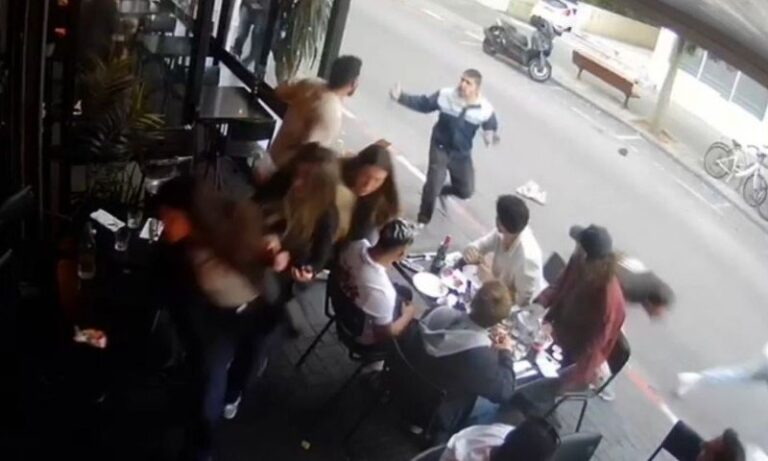Theדבר תורה is לזכות רפואה שלימה ל-אברהם בייניש בן גאלדה שפרינצה.
ולאה בת חנה
And לזכר נשמת ר’ אברהם בן שמחה זצ”ל
ר’ חיים בן ר’ צבי ארי-ה זצ”ל
ר’ יחיאל יהודה בן ר’ אברהם מרדכי הכהן זצ”לור’ אליהו מרדכי זצ”ל בן ר’ אברהם יעקב נ”י
This weeks email is sponsored l’zecher nishmas Yosef Yehuda ben Avraham Avinu, ZT”l; his life was an inspiration to us all.
When Moshe was ready to give the brochos and the klalos, the Torah says that he divided the shevatim between two mountains. Six shevatim stood on Har Grizim, where the brochos were given while the others stood on Har Aival, where the klalos were given. The Mishna in Sota states that there was actually a whole sequence. Some shevatim went up on one mountain, others went to the second mountain while the Levi’im stood in middle. They turned towards Har Grizim each time a bracha was mentioned and to Har Aival when a klala was declared.
While it is important for every person to know that when they perform a mitzvah it brings bracha and when one, chas v‘shalom, commits an aveira it brings klalos; but what was the reason for the out of the ordinary way to present these two important ideas? What would be wrong with gathering klal Yisroel in the one big area and giving over these commandments? There has to be some significance in the fact that this was not only presented in such a fashion but also by the feet of these two mountains? What noteworthy role did these mountains play?
Rav Samson Raphael Hirsch, Zt”l, answers with an important lesson for us all to take to heart.
These two mountains, Har Grizim and Har Aival, were side by side, in Shevet Ephraim’s portion of Eretz Yisroel. Har Grizim was located on the south side, next to Shechem. It had stunning landscaping, beautifully grown grass and many types of foods grew on it; it was full and prosperous with an abundance of flora. On the other hand, Har Aival was located adjacent to that, towards the northern side of Ephraim’s portion. It was empty and barren. Nothing grew on this mountain and it seemed to be void of any plant life. These two mountains, which stood side by side, presented the most striking visualization of beracha and klala. They are both being nourished by the same soil, the same water and the same wind. Yet, Har Aival was barren of all shrubbery while Har Grizim was full of plush vegetation, all the way up the mountain. We see that beracha and klala are not dependent on external appearances; they lie within a person’s heart. Brocha and Klala lie within a person’s craving and interest in the Ribono Shel Olam.
Says Rav Hirsch, the Torah wants to take us to a place where we can see tremendous brocha and klala; to teach us an eternal lesson. We shouldn’t think that brocha and klala are based upon our production. The Torah considers a person blessed by the simple fact that he has the strongest desire and will to do the right thing. As humans, we all fall and stumble. We may not be the person we had intended to be (or can be), but if we have the motivation, the will, and the desire, we will persevere and are considered blessed.
Rabbeinu Yona brings down a parable to this. There were two individuals who were arrested for forging money. They were both brought to trial and were convicted. One man gets a ten year sentence while the other gets a twenty year sentence, for the exact same conviction. The person who was hit with the twenty year sentence responds, ‘Why did I get twenty years, if we both committed the same crime and all he got was ten years?’ The judge answered him ‘because the counter fitting machine that committed the crime was found in your basement.’
If a person has the will (the machine) and the attitude of wanting to do, then it works in his favor (for good or for bad). If a person has no feelings or thoughts to do well, then he is not blessed. A person must remember that what appears to be a blessing externally isn’t so; it is what’s inside that counts and what makes each of us considered blessed.
As we get closer and closer to the Yom Hadin we should all be zoche to have the right motives and the desire to yearn to do what’s right ; by doing so that should allow us to be considered blessed by Hashem and help our accounts lean more towards the mitzvos side when we are getting judged on Rosh Hashana.
HAVE A GREAT SHABBOS.
To sponsor a weekly issue, for any occasion, please email: [email protected].
For questions or comments please send an email to: [email protected]
To add a friend to this weekly email list please send a request to: [email protected]
CHECK IT OUT. IT’S NOW LIVE. LOOK UP ALL YOUR FAVORITE VERTLUCH AT: www.vertluch.com










